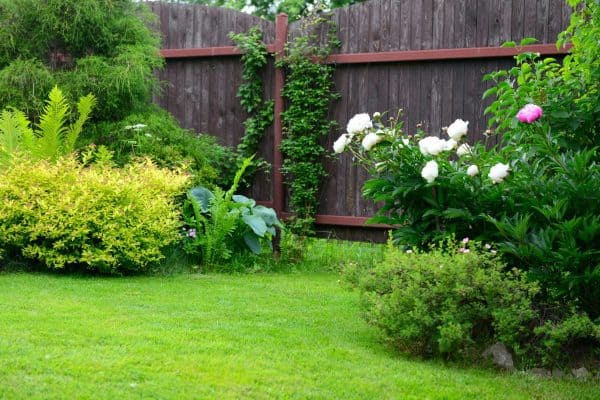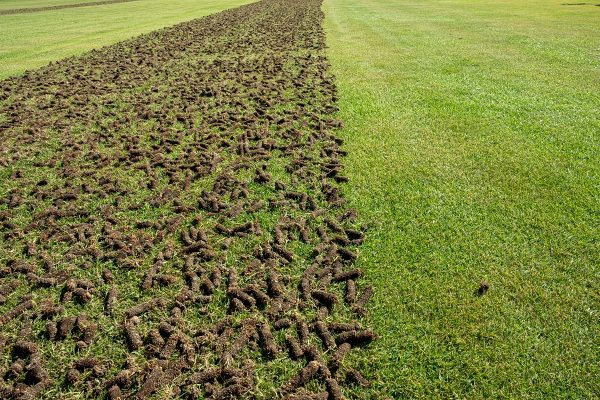You’re setting up your home’s plumbing system and notice a need for a backflow preventer for your sprinkler system. But where does it go? Also, how do you turn it on? We researched these concerns for you and here’s the answer we found.
The backflow preventer for a sprinkler system should be in an above-ground enclosure. Once found, turn it on by following these steps:
- Locate and turn off the valve on the assembly.
- Close the drain on the backflow preventer if it has one.
- Find the sprinkler’s water switch or valve and turn it on.
Take note that a sprinkler system’s backflow-preventing assembly’s location may depend on certain factors. So continue reading as we talk about this plumbing setup in greater detail. We’ll also tackle other relevant details, such as some types of backflow preventers you might see on the market.
![The nozzle of the automatic watering system, Where Is The Backflow Preventer On A Sprinkler System [And How To Turn On]?](https://landscapingbase.com/wp-content/uploads/2022/08/Where-Is-The-Backflow-Preventer-On-A-Sprinkler-System-.png)
Where Should I Put My Backflow Preventer For A Sprinkler System?
Backflow preventer installation locations often depend on factors like the plumbing system’s design and valve’s specific model. Still, the assembly should typically sit within an enclosure above the ground. That way, you can protect the preventer from possible issues, such as animals and pests ruining the assembly.
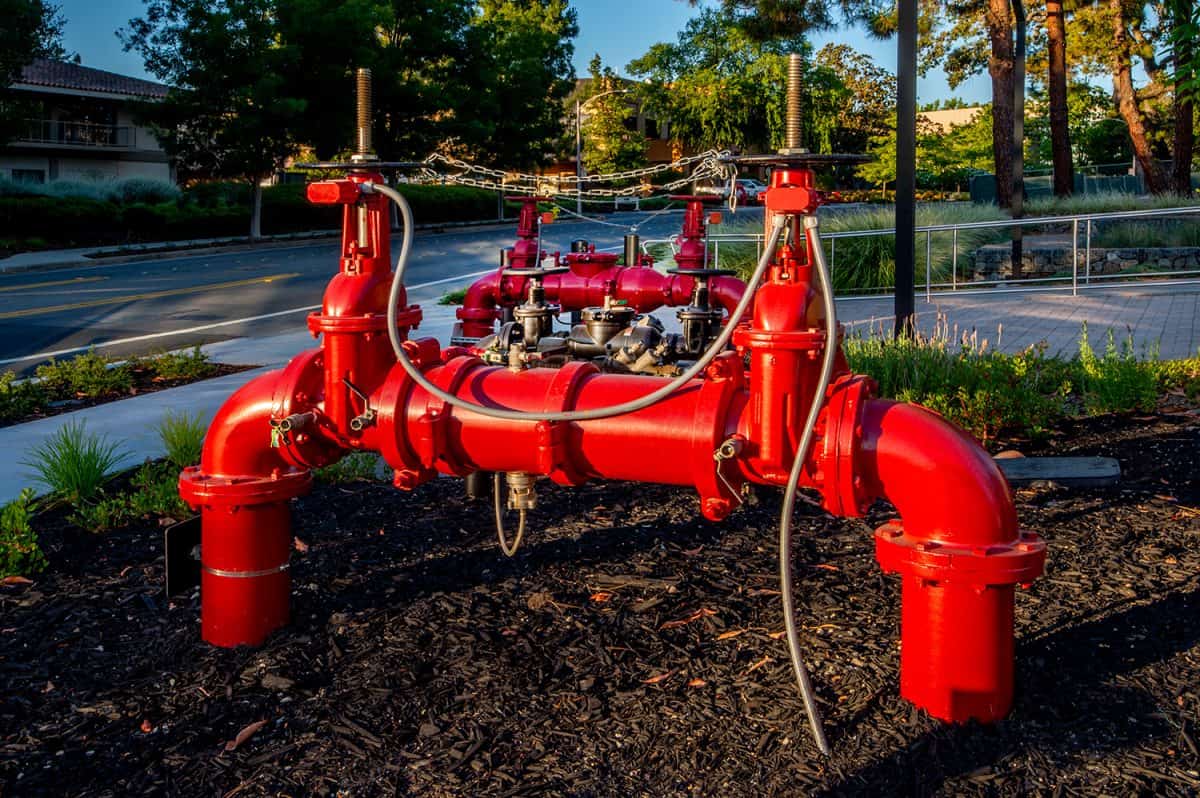
Check out this backflow preventer cage on Amazon.
How Do You Open The Valves On A Backflow Preventer?
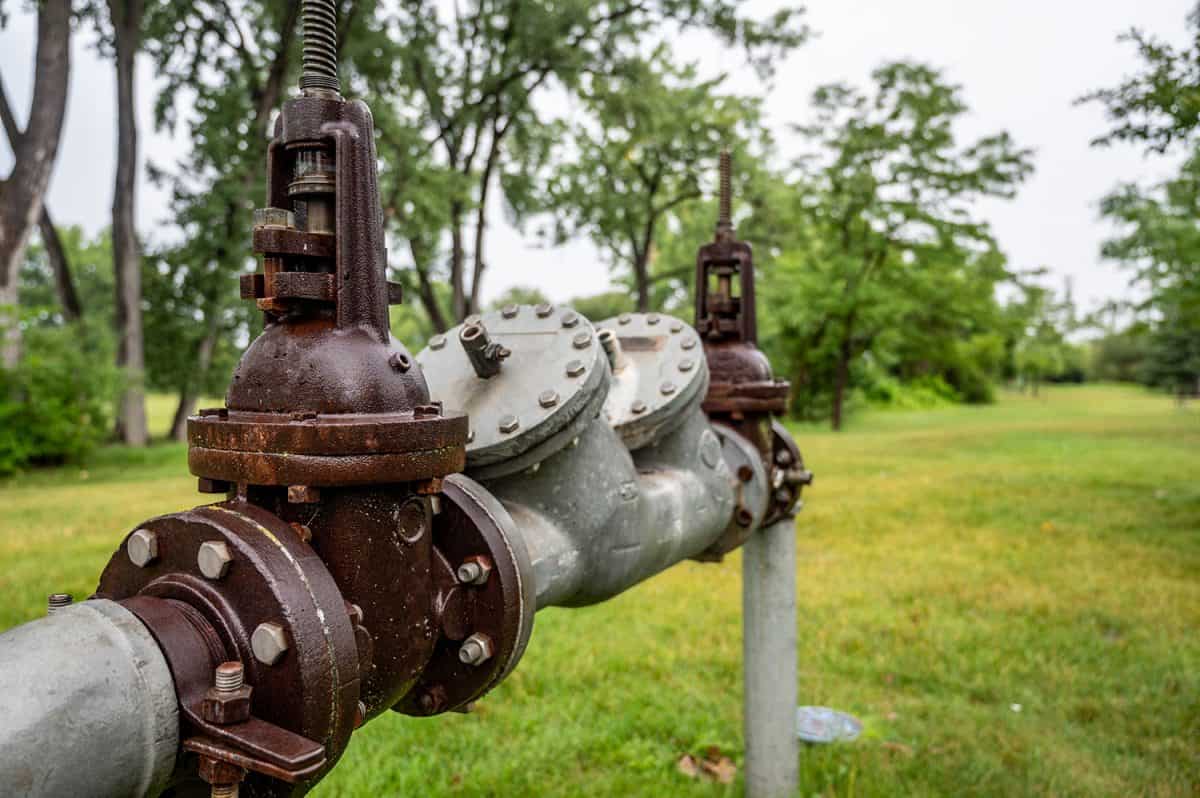
Take note that you may not need any special skills and/or tools to open the valves on a backflow preventer. Then, follow these general steps to complete this task:
Step-by-Step Guide
- Turn off the first valve by turning it until it becomes perpendicular to the adjacent pipe.
- Close the drain if the assembly has one.
- Locate the main water switch or valve for the sprinkler system and activate it.
Check out this backflow preventer assembly on Amazon.
You can also watch the video below if you need a visual guide for the steps mentioned above:
How To Install A Backflow Preventer?
Keep in mind that activating a backflow preventer for a sprinkler system (or for other purposes) often needs the assembly to have a proper installation. But this task typically demands certain requirements for you to complete it with as few risks as possible. Some of this project’s prerequisites are:
- The assembly should be compatible with the plumbing system.
- You feel confident with your plumbing installation skills.
- You have the necessary experience and knowledge to troubleshoot errors if they occur.
- The installation doesn’t go against local building codes.
After taking note of those details, and you still wish to continue this project by requesting professional assistance, continue by following these steps:
What You’ll Need
- Shovel
- Pipe wrench
- Pipes
- Backflow preventer assembly
- Pipe attachments
Step-by-Step Guide
Step #1: Locate The Sprinkler System’s Irrigation Valves
Sprinkler systems often have their irrigation valves hidden within valve boxes. Search your property for an exposed valve box and open it. If you have trouble accessing the assembly in the container, you may need to dig around it to gain access to the valves.
Step #2: Find The Sprinkler System’s Supply Line
If the valves in the box connect to other plumbing fixtures, you need to search for the pipes that attach to your sprinkler system. Check your property’s plumbing diagram if you need help in this regard. Otherwise, you might need to dig around your lawn until you find the sprinkler’s pipes.
Step #3: Assemble The Backflow Preventer
Take out the parts of your backflow preventer kit from its packaging. Make sure to place the components on a clean and flat surface while working on them. Then, assemble the pieces while following the manufacturer’s instructions.
Note: The kit you purchased may or may not be a complete set. If it’s the latter, you might need to buy additional equipment and tools, such as sealants, to create the backflow preventer assembly.
Step #4: Attach Pipes To The Assembly
Connect pipes to the backflow preventer so you can attach them to the sprinkler system's pipes later. Ensure that the pipes have appropriate diameters to ensure they fit with the rest of the sprinkler’s framework correctly. Make sure that the connections are secure with the help of a pipe wrench.
Note: You may need to attach an elbow fitting at the ends of each pipe. These attachments can help create the above-ground assembly as opposed to installing the backflow preventer underground. Also, ensure that the assembly is level to the ground to avoid issues caused by misalignments.
Step #5: Cover The Hole
Once the backflow preventer is secure, cover the hole you dug with soil. Remember, don’t leave the pipes exposed as these may create concerns, such as attracting moisture-loving pests.
Watch the video below to gain additional insights into this operation. This instructional clip also shows details on how to ensure the connections stay in place:
How Does A Backflow Preventer Work?
As its name implies, a backflow preventer helps prevent water from re-entering the water supply line. Think of this assembly to work as a gate that inhibits released water from returning to its source. If backflow happens, it can contaminate the water.
What Are The Types Of Backflow Preventers
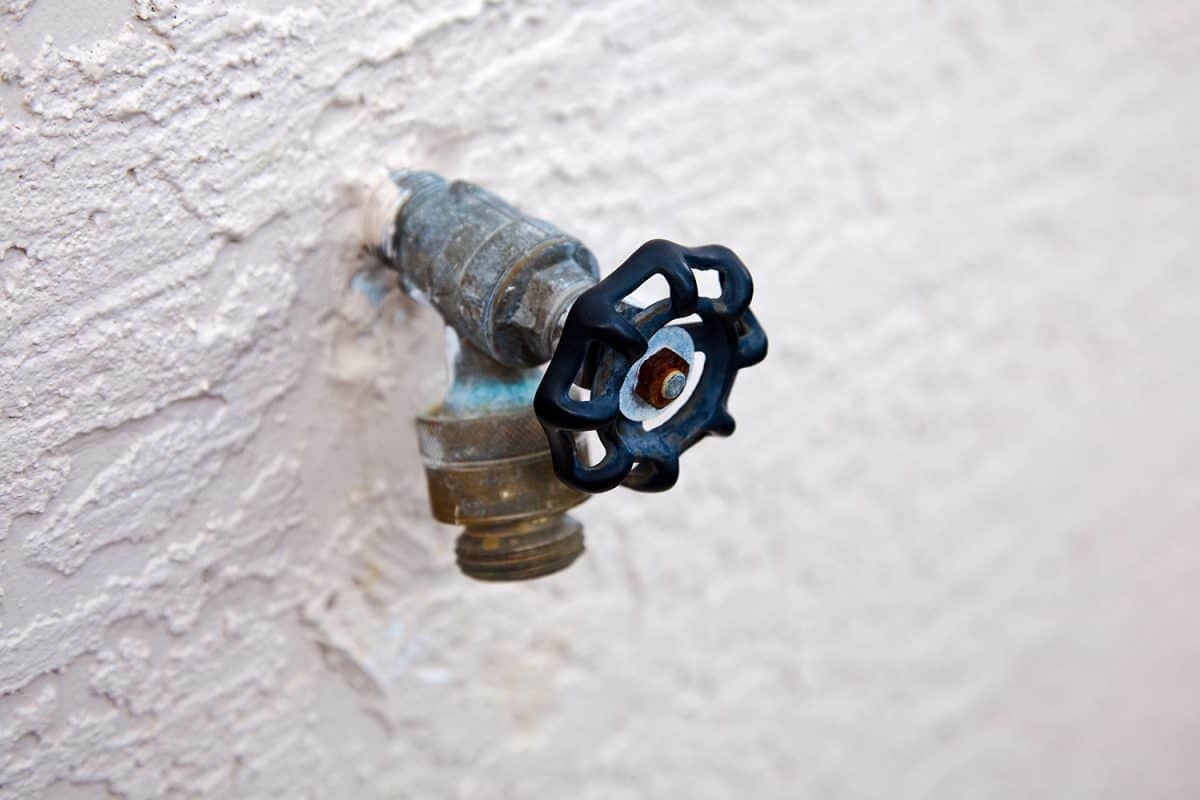
Backflow preventers come in different kinds. Also, each type typically has distinct characteristics to help control specific water systems. Some types of backflow preventers that you may see on the market are:
Atmospheric Vacuum Breaker (AVB)
An AVB backflow preventer that uses air to stop water from returning through a downstream siphon. Unlike other backflow preventers, AVBs are generally straightforward models. However, it often demands more installation requirements than some other backflow-preventing assemblies.
Take note that you shouldn’t install an AVB in potable water lines. Instead, use an AVB for other plumbing fixtures, such as sprinkler systems and other water irrigation mechanisms.
Pressure Vacuum Breaker (PVB)
It can be quite easy to mistake an AVB for a PVB. However, the difference between the latter from the former is its spring-loaded valve. This component allows users to install the PVB in tap water lines. But you can still use a PVB for sprinklers.
Check out this PVB assembly on Amazon.
Reduced Pressure Zone Device (RZPD)
RZPDs are usually practical choices in places where plumbing fixtures may introduce significant harm to nearby objects and people. These assemblies work by having three valves to help manage the water supply line. The two valves control the water through pressure while the third one will aid in managing the line if one of the valves fails.
Check out this RZPD assembly on Amazon.
Air Gap
Unlike other backflow preventers, an air gap is typically a component as opposed to a complete assembly. It's usually a non-mechanical part attached to other plumbing fixtures that assist in stopping water re-entry.
Check out this air gap drain on Amazon.
Do I Really Need A Backflow Preventer?
A backflow preventer is an essential plumbing assembly that’s useful for different reasons. Some of the general grounds for the importance of having a backflow preventer are:
- Helps reduce the possibility of water becoming contaminated.
- Reduces the risks of plumbing repairs.
- Makes the property adhere to specific legal guidelines.
Final Words
Know the type of backflow preventer on your sprinkler system as this piece of information can help verify its location. However, you can typically find this assembly above-ground, and it should be inside an enclosure.
If you like this post, here are other great reads you can check out:







